- Concept Statement: Human Being in Nursing Theory
- Johnson’s Behavioral Model: Meparadigms and Philosophies
- Johnson’s Behavioral Model: Conceptual Model
- Science of Unitary Human Being: Metaparadigms and Philosophies
- Science of Unitary Human Being: Conceptual Model
- Applying Concepts to Nursing Practice and Comparing to One Model
- Conclusion
- References
Concept Statement: Human Being in Nursing Theory
- Philosophic viewpoint: Humans are represented as sentient and dynamic entities who are capable of creativity, abstract reasoning, self responsibility, and aesthetic appreciation;
- Spiritual and moral viewpoint: humans are defined as valued, respected persons who are understood with the right to making choices concerning their health.
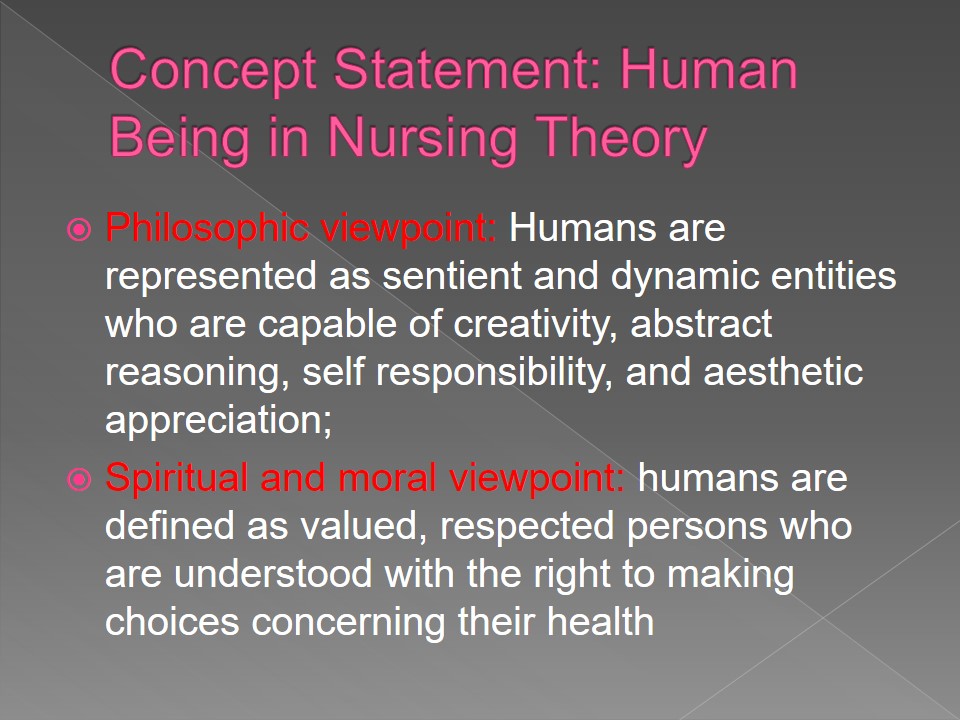
Johnson’s Behavioral Model: Meparadigms and Philosophies
- Metaparadigms: Human beings should be evaluated from the perspective of two main systems: the behavior system and the biological one (Theoretical Foundation of Nursing, 2011);
- Metapardigms: The concept of human being could be regarded as the behavioral model that seeks to make constant adaptations to achieve balance of the adjustment process;
- Philosophies: nursing focuses on promoting efficient behavioral functioning of patient for the purpose of noticing and preventing illness.
There are three main requirements of the nursing treatment that should focus on protection from harmful influence, motivation from growth, and insurance of a nurturing environment. Therefore, the main tasks of nursing professionals consists in assisting the patients in reaching psychological and physical equilibrium.

Johnson’s Behavioral Model: Conceptual Model
Underpinnings for applying to Johnson’s Behavioral Model:
- It could be combined with other theories (social learning theory) (Meleis, 2011);
- It could be introduced in various settings with emphasis on bio-psychological, social and cultural factors;
- It identifies universal patterns of behavior.
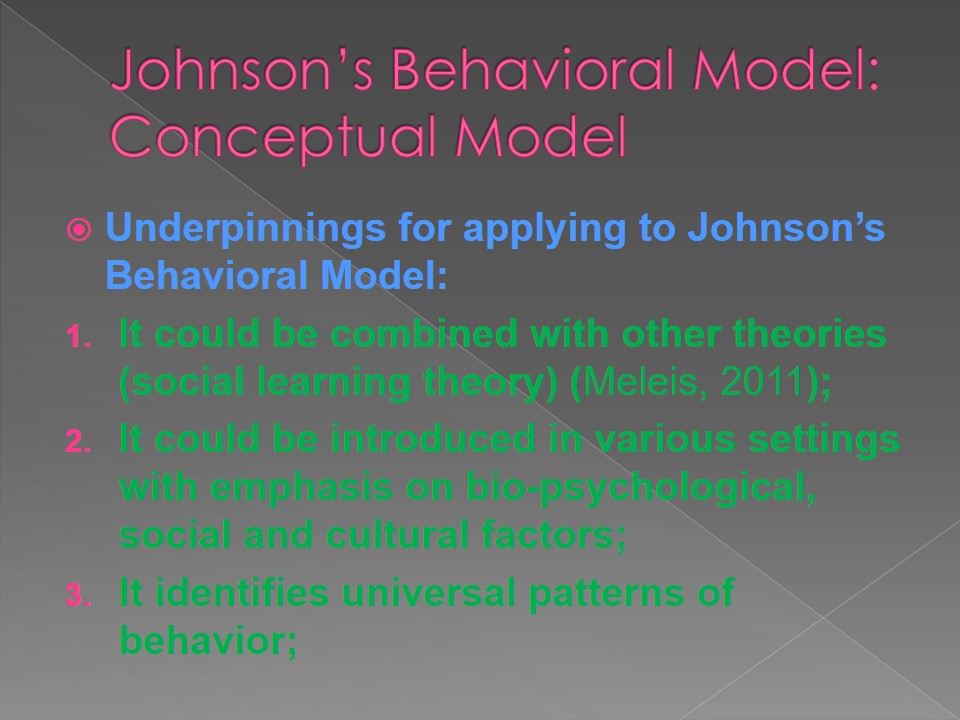
Science of Unitary Human Being: Metaparadigms and Philosophies
- Metaparadigm:
- Individual is “irreducible, invisible, pan-dimensional energy field identified by a pattern and manifesting characteristics that are specific to the whole and which cannot be predicted from knowledge of the past”(Dossey and Keegan, 2008 p. 534-535);
- Philosophies:
- Roger’s definition changes our perception of the communication through exchange of energy fields;
- Human interaction can be extended beyond spatial and temporal dimensions.
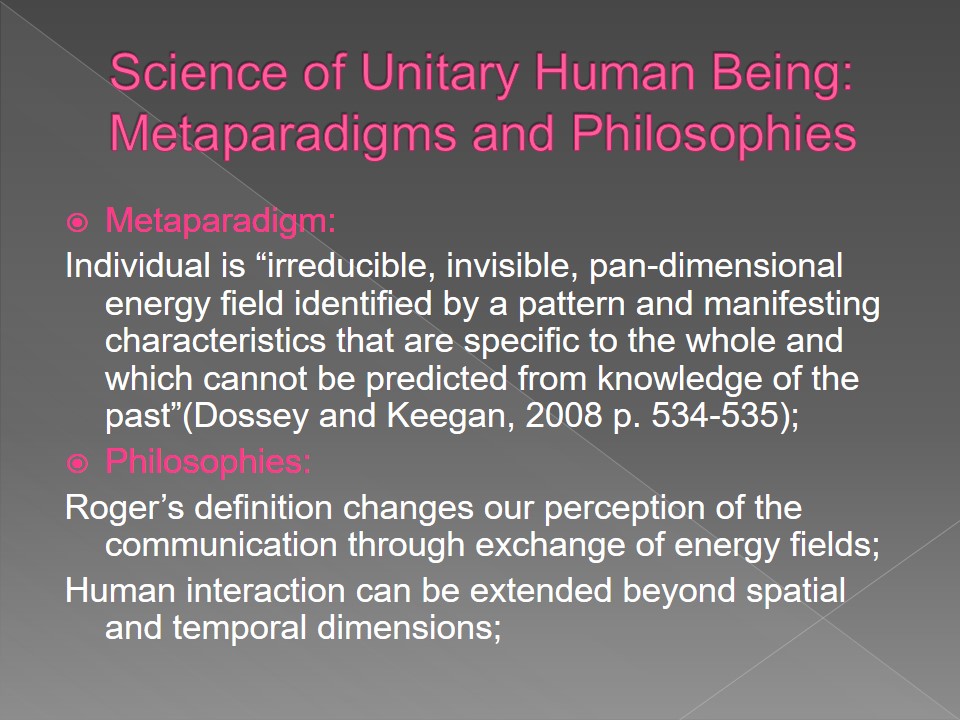
Science of Unitary Human Being: Conceptual Model
Roger’s Holistic model focuses on the integrality principle and establishes the foundation for new communication strategies. In this respect, integrality is represented as a continuous human field process, in which individual and environment are exchanging energy information. Behaviors, emotions, and thoughts influence each other, leading to new cultural and social environment. Additionally, Roger’s model focuses on an abstract system in which humans are represented as energy field interacting with the external environment, which is also shaped by cultural and social backgrounds of these humans.
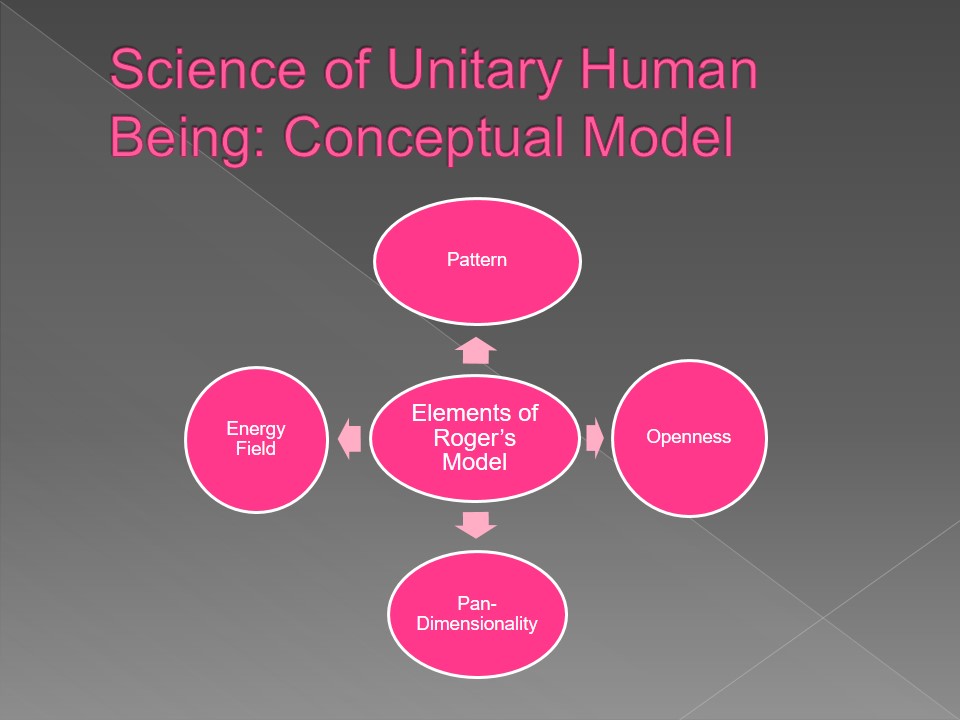
Applying Concepts to Nursing Practice and Comparing to One Model
Science of unitary being is much more effective in disclosing the main aspects of nursign and clinical practice (Bramlett et al. 2008):
- Why?: Viewing humans as holistic beings differs much from traditional;
- Why? The model relies primarily on behavioral aspects of humans;
- Why? Perceiving a person in a continuous dynamics contributes greatly to the analysis of person’s psychological and emotional wellbeing.
Science of unitary being serves as a solid foundation for developing theoretical framework in a clinical setting (Bramlett et al. 2008).
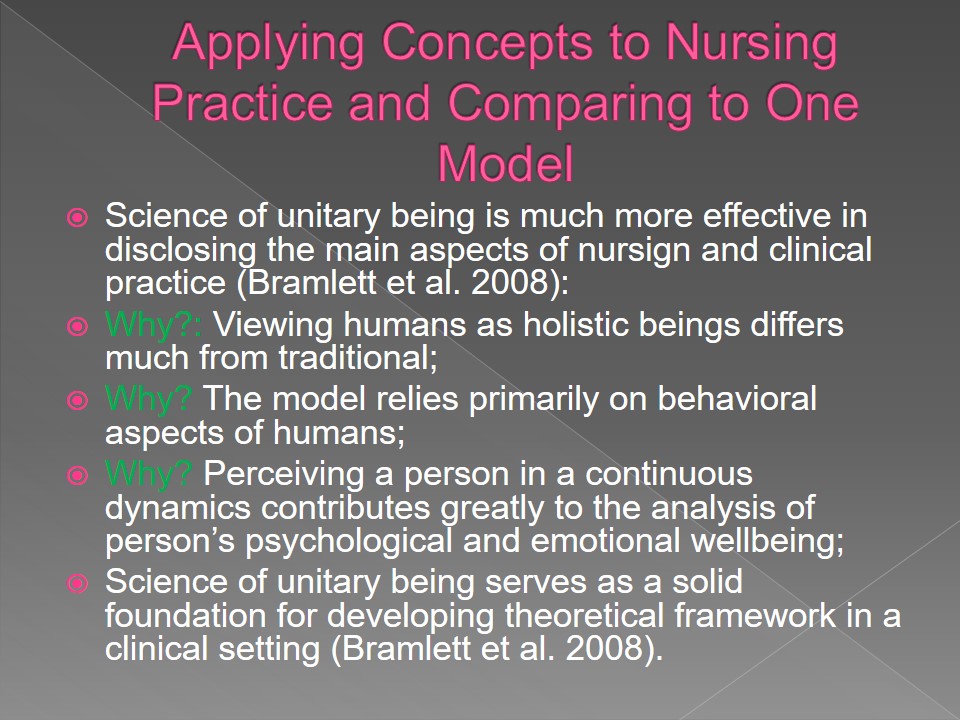
Conclusion
- Development of innovative technologies underscores the importance of Rogerian model;
- The theory grasps broader sense of the community and its role in treating individuals;
- The theory underlines the therapeutic value of the concept of humans as holistic beings.
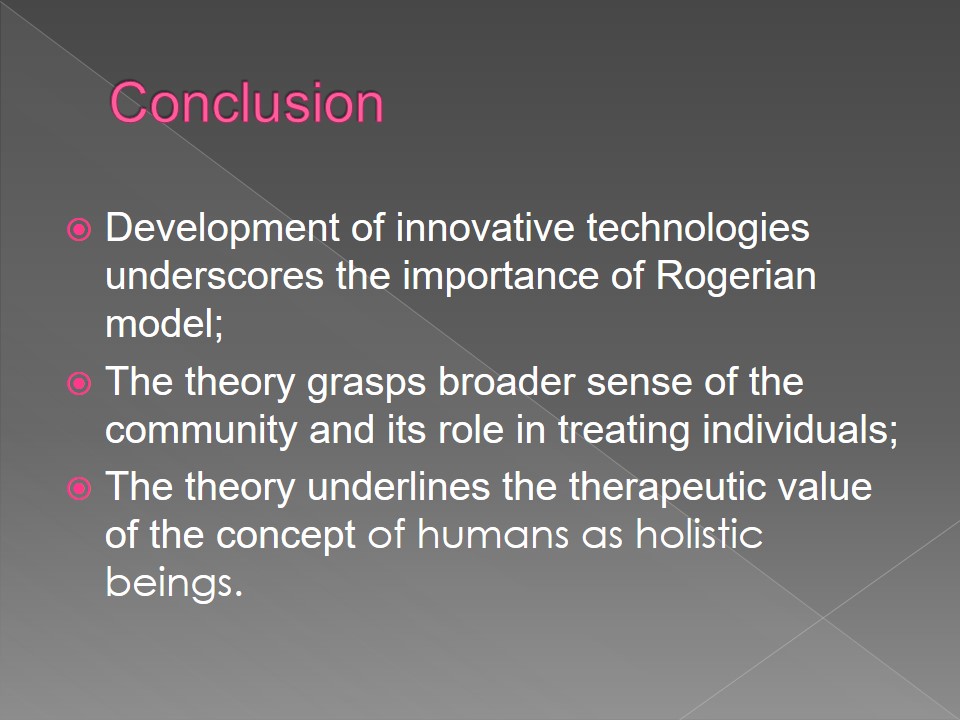
References
Bramlett, M. H., Gueldner, S. H., & Boettcher, J. H. (2008). Reflections on the Science of Unitary Human Beings in Terms of Kuhn’s Requirement for Explanatory Power. Visions: The Journal of Rogerian Nursing Science, 15(2), 7-22.
Dossey, B. & Keegan, L. (2008). Holistic Nursing: A Handbook for Practice. US: Jones & Bartlett Learning.
Meleis, A. I. (2011). Theoretical Nursing: Development and Progress. US: Lippincott Williams & Wilkins.
Theoretical Foundation of Nursing (2011). Dorothy Johnson. The Behavioral System Model. Web.